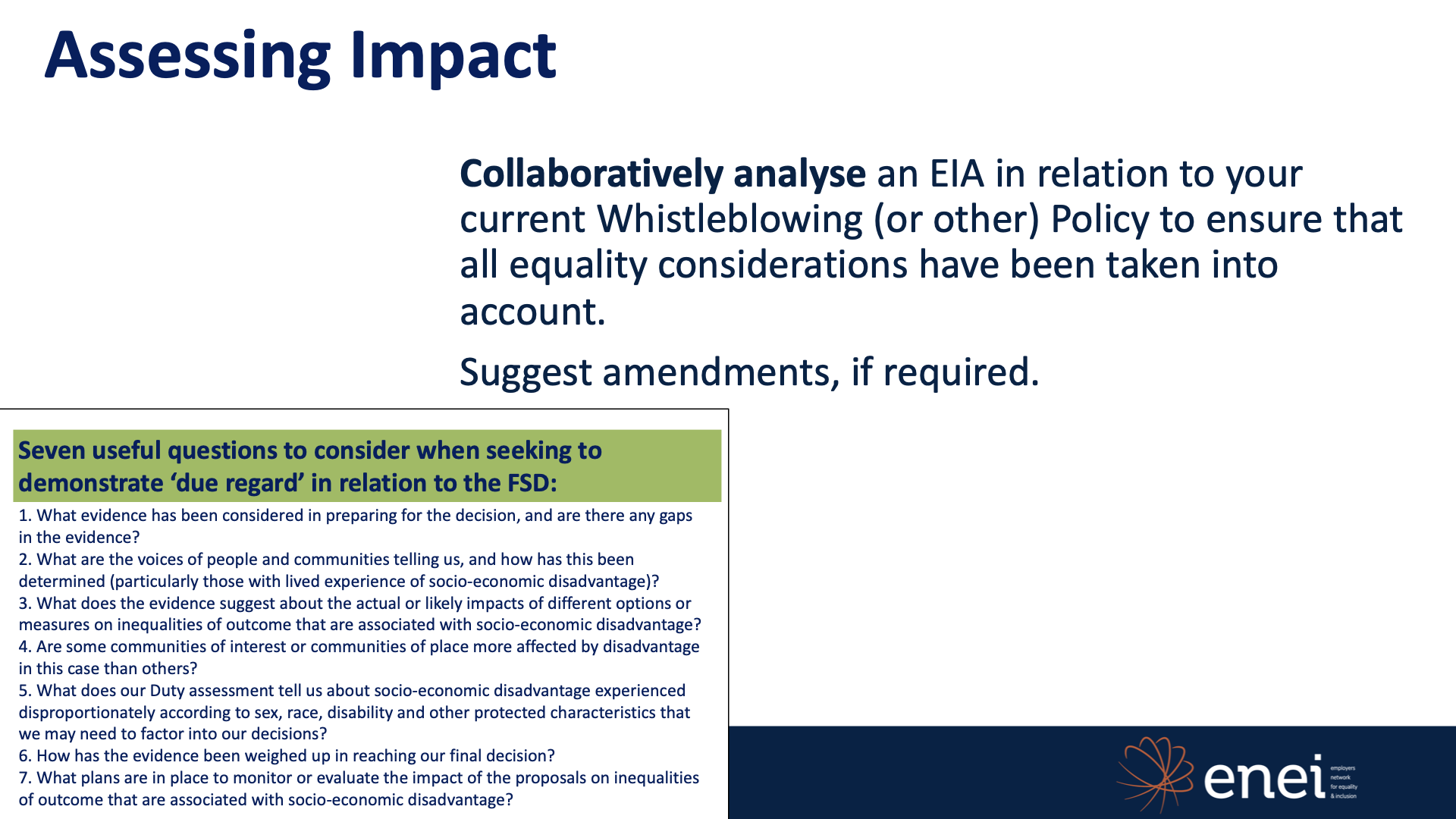Introduction to EDI for Inclusive Leaders
Developing a Consciously Inclusive Culture
Activity One Instructions
- The person whose name is first alphabetically will be the leader of this activity.
- Your leader will choose a speaker to share a summary of what was discussed, when we return to the Main Room.
- If you prefer not to be the speaker this time, please select another colleague.
Questions below.

Activity Two Instructions
Diversity and Inclusion Audit
1.The leader for this activity will be the person who was born in the earliest month of the year.
2.Your leader will choose a speaker to share a summary of what was discussed, when we return to the Main Room.
3.If you prefer not to be the speaker this time, please select another colleague.
- How diverse and inclusive is the organisation?
- Why are you at this stage of the journey?
- What are the reasons for the way you voted and would your teams agree?
- What are the challenges in shifting across to a B?
Graphic below.

Activity Three Instructions
Micro-aggressions Discussion
- The person who lives farthest from their city of birth will be the leader of this activity.
- Leader, facilitate an open discussion on the questions below.
- This activity is completely confidential and won't be shared on our return to the Main Room.

Activity Four Instructions
6 Signature Traits
Objective: Discuss the 6 Signature Traits in relation to Inclusive Leadership
Which of the signature traits do you feel you demonstrate and do well in?
Cognizance of bias
Courage
Commitment
Collaboration
Cultural intelligence
Curiosity
Which ones do you feel you can do more to improve?
Would your teams agree?
Cognizance of bias.
Inclusive leaders understand that personal and organisational biases impact on their ability to make objective bias free decisions.
They put time and effort in to identifying their own biases and learn ways to prevent them from influencing decisions.
They also seek to implement policies, processes and structures to prevent organisational biases from stifling diversity and inclusion.
Without such measures, inclusive leaders understand that their natural inclination and preference could lead them toward self-cloning, and that operating in today’s society requires a different approach.
Courage.
Inclusive leaders demonstrate courage in two ways.
First, they aren’t afraid to challenge entrenched organisational attitudes and practices that don’t encourage diversity and inclusion, even if their recommendations are politically or culturally unpopular.
Nor are they afraid to display humility by acknowledging their own personal limitations and seeking contributions from
others to overcome them.
Some leaders find it difficult to admit they don’t have all the answers; in that respect, courage and humility go hand in hand.
Commitment.
Cultivating a diverse, inclusive workforce takes time and energy, two of a leader’s most precious commodities.
So what motivates some executives to champion this issue?
In addition to a belief in the business case, inclusive leaders are driven by their values, including a deep-seated sense of fairness that, for some, is rooted in personal experience.
Inclusive leaders believe creating a welcoming culture begins with them, and they possess a strong sense of personal responsibility for change.
When senior leaders, champions, devote time, energy, and resources to nurturing inclusive workforces, by investing in people and inspiring others to share their passion and goals, their actions signal a true commitment.
Collaboration.
Inclusive leaders understand that, for collaboration to be successful, team members must first be willing to share their perspectives. To that end, they create an environment in which all individuals feel empowered to express their opinions freely with the group.
They also realise that diversity of thinking is critical to effective collaboration; thus, they pay close attention to team composition and team processes.
For example, they prevent teams from breaking into subgroups, which can weaken relationships and create conflict.
They also embed a sense of “one team” by creating shared goals, and by working to ensure team members understand and value each other’s knowledge and capabilities.
Cultural intelligence.
Knowledge of other cultures is essential for our organization, from our internal functions to our external services.
Beyond “book” knowledge, cultural intelligence is a leaders’ ability to change their styles in response to different cultural norms.
For example, culturally intelligent leaders who are typically extroverted and demonstrative will make an effort to show restraint when engaging and communicating with individuals whose cultures value modesty or humility.
They regulate the speed and tone of their speech and modify their nonverbal behaviors, gestures, facial expressions, body language and physical interactions, as situations dictate.
In addition to understanding other cultures, these leaders also demonstrate self-awareness of their own culture, recognising how it shapes their view and how cultural stereotypes can influence their expectations of others.
Curiosity.
Open-mindedness, a passion for learning, and a desire for exposure to different ideas have fast become leadership traits crucial to success, especially in challenging times such as those we are currently navigating.
Curiosity and openness are hallmarks of inclusive leaders, who hunger for other perspectives in order to highlight any challenges that they were not aware of and improve their decision-making.
In addition to accessing a more diverse array of viewpoints, inclusive leaders’ ability to engage in respectful questioning, actively listen to others, and take on board a range of ideas makes the people around them feel valued, respected and represented.
Inclusive leaders refrain from making fast judgments, knowing snap decisions can stifle the flow of ideas on their teams and are frequently tinged with bias.

Activity Five Instructions
Assessing Impact
Collaboratively analyse an EIA in relation to your current Whistleblowing (or other) Policy to ensure that all equality considerations have been taken into account.
Suggest amendments, if required.
- Your Leader for this activity will be the newest member of staff.
2. They will guide you through the document.
3. A notetaker will be chosen by the Leader, to write down key considerations within the document. Focus particularly on disadvantaged communities including those protected within PSED and FSD.
4. Please make sure all voices and perspectives are heard.
We will have a broad discussion when we return to the Main Room.


Inclusion & Wellbeing Consultant David Equality Hull-Watters
Enhancing Education
& Employment for All
Copyright © All Rights Reserved














